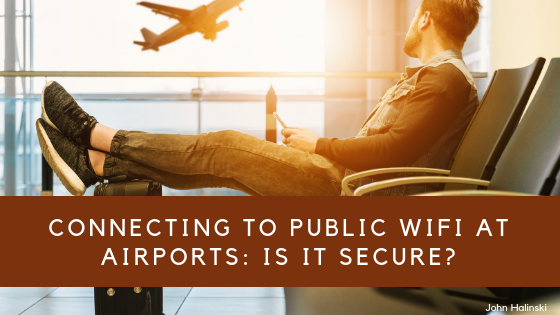Connecting to free wifi is a modern commodity that many look for whenever leaving the comfort of their own homes. As the mobile app industry continues to boom, more time is being spent on our cell phones each year. In 2017, studies show that adults in America spent over three hours per day on their mobile devices. Our mobile devices house an incredible amount of personalized data, from sensitive work information, to credit card numbers, email and more. In places like libraries, coffee shops, and especially airports, the concern for comprising security by connecting to an available wifi host worries many. How secure are wifi networks in our airports? Below is a brief examination of how secure airport wifi is, the risks associated with cyber security attacks, and what you can do to stay protected.
Airports have many measures put in place to ensure a secure, safe environment. Individuals entering and departing from the buildings go through multiple screening and identification processes to verify that themselves and their belongings are legal, safe, and pose no threats to the public. Despite these efforts, many believe the cyber security is lacking in many large airports across the nation. This belief stems from the idea that any item connected to a network in the airport which is easily accessible, is also easy to hack. This year the US Transportation Security Administration responded to previous research suggesting the ease of hacking into x-ray scanners, which could then be used to cover up contraband, by announcing a partnership with Unisys, leaders in information technology. TSA joined forces with Unisys to implement software to manage and protect screening equipment. In light of the emerging research and findings in cybersecurity, many airports have placed their equipment on networks with improved connectivity and traceability.
While cybersecurity can pose a threat to airports and the equipment housed within, passengers must also exercise caution when connecting to wifi networks from their mobile devices or laptops. With extra time on hand while waiting to catch a flight, individuals connect to the free public wifi for various reasons. Whether logging on to send emails, finishing up a work project, checking in with social media or even indulging in online shopping, users are weighing the risks of comprising their personal and sometimes confidential information. Should passengers want to take advantage of this convenient accommodation, there are a few things they can do to protect themselves and their devices:
- Be sure you are logging in to the correct network. Verify the airport’s wifi before connecting and be on the lookout for fake networks that appear similar in name, also referred to as “evil twins.”
- Turn off file sharing. Navigate to your user settings and disable all file and print sharing capabilities. This blocks the ability for your files to be transmitted elsewhere. Additionally, verify that your AirDrop feature is turned off if you own an Apple phone.
- Avoid accessing secure information such as your credit card info, address, and phone number while using public wifi.
- Use a virtual private network, or VPN to access a secure connection.
